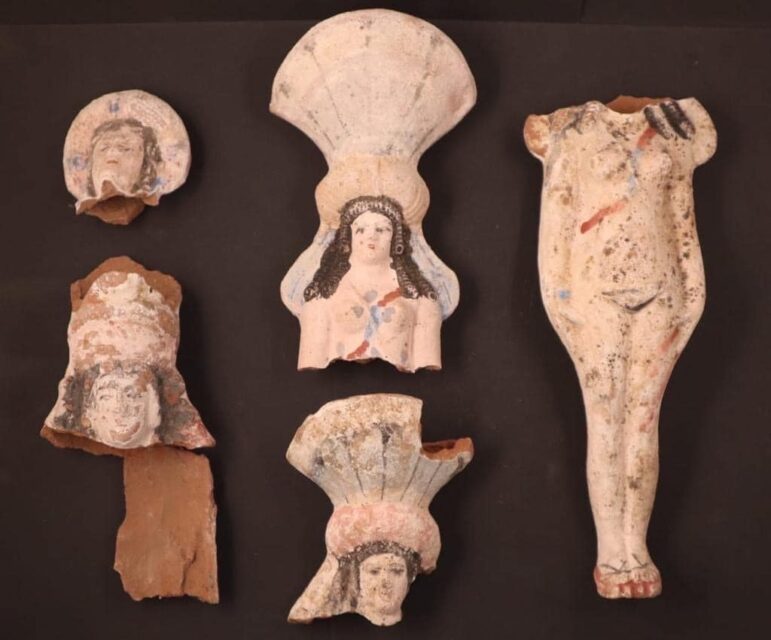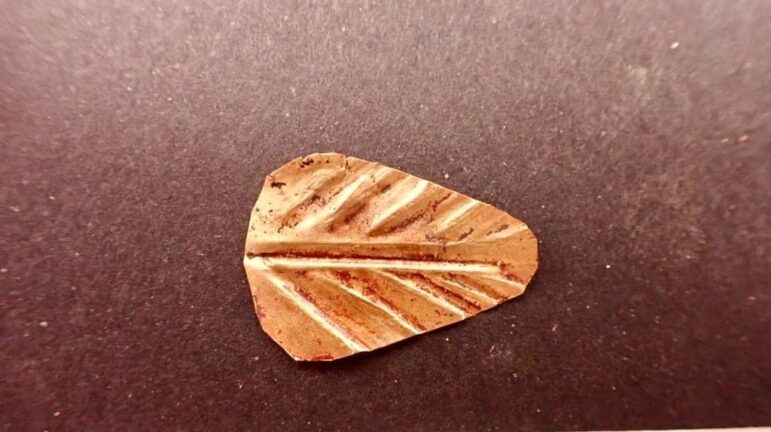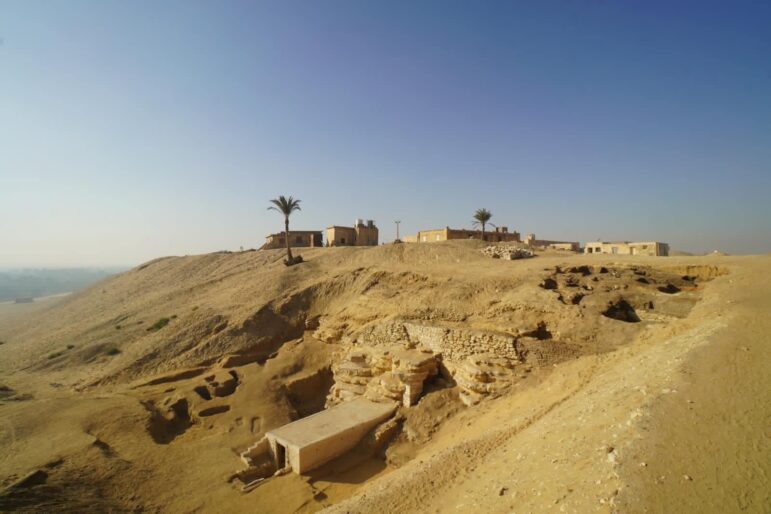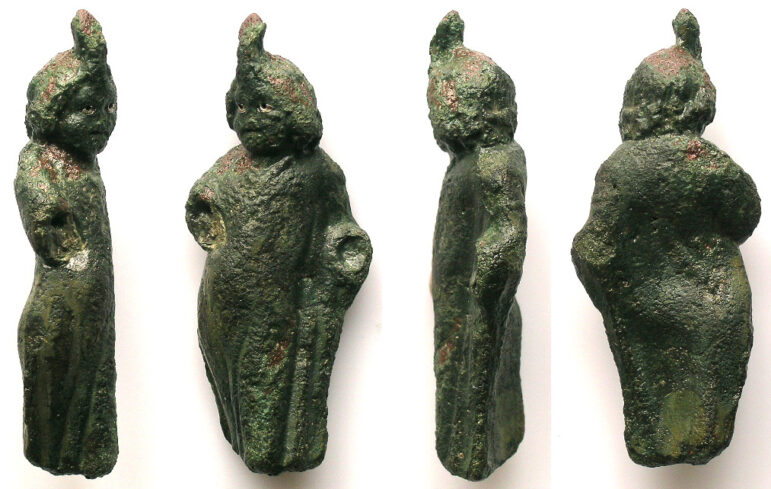
CAIRO – The Egyptian Ministry of Tourism and Antiquities has announced findings from excavations in Saqqara – the northern area home to the famous Stepped Pyramid of Djoser – and Al-Bahnasa, known anciently as Oxyrhynchus, located in Middle Egypt. The excavations have uncovered dozens of artifacts, but several depict deities that are of interest to modern Pagans.
The ministry announced the new findings at Al-Bahnasa on January 8th in a Facebook post. The excavation was carried out by researchers from the University of Barcelona collaborating with the Institute of the Ancient Near East, led by Maite Mascort and Esther Pons Miladou. The archeologists uncovered a series of rock-cut tombs from the Ptolemaic (304–30 B.C.E.) and Roman/Byzantine (30 B.C.E–641 C.E.) periods. During these periods, Oxyrhynchus was the second most important city in Egypt after Alexandria, with which it had many ties.

Terracotta figures of Isis-Aphrodite found at Oxyrhynchus, modern-day Al-Bahnasa, Egypt [Egyptian Ministry of Tourism and Antiquities]
Among the finds in this excavation were terracotta figurines of Isis-Aphrodite wearing a flower crown. Isis-Aphrodite is a syncretic form of the Egyptian goddess Isis with fertility aspects of the Greek goddess Aphrodite, who was brought into the region by the ruling Ptolemaic Greeks. Although figures of Isis-Aphrodite were found throughout Ptolemaic and Roman Egypt, these terracotta figures are the first of their type to be found at Oxyrhynchus.
More than 20 Roman-era mummies were also discovered in the excavation, preserved in colorful wrappings. Several of the mummies had a piece of gold in the shape of a tongue in place of their tongues, a practice previously known from other findings in Oxyrhynchus that was believed to preserve the dead.

A golden tongue found with a mummy at Oxyrhynchus, modern Al-Bahnasa, Egypt [Egyptian Ministry of Tourism and Antiquities]
“This find suggests that Al-Bahnasa still harbours numerous secrets waiting to be unveiled,” said Secretary General of the Supreme Council of Antiquities (SCA) Mostafa Waziri.
![]()
The Wild Hunt is grateful for the recent support.
The Wild Hunt is very grateful to our readers for your recent financial support and amazing words of encouragement. We remain one of the most widely-read news sources within modern Paganism, and our reporters and columnists remain dedicated to a vision of journalism for and about our family of faiths.
As a reminder, this is the type of story you only see here. This is how to help:
Tax Deductible Donation | PayPal Donations | Join our Patreon
You can also help us by sharing this message on your social media.
As always, thank you for your support of The Wild Hunt!
![]()
On January 11th, the ministry issued another Facebook post, this time about the excavations in Saqqara. Saqqara was the burial site for the Egyptian capital at Memphis and maintained its importance as a funerary site for more than 3000 years. The current excavation is led by Nozomu Kawai of Kanazawa University in Japan, in collaboration with the SCA.

A rock-cut tomb at Saqqara, Egypt [Egyptian Ministry of Tourism and Antiquities]
The biggest finding from this mission is a rock-cut tomb believed to date to the Second Dynasty, over 4,000 years ago. The tombs contained an adult buried with a colorful mask, as well as a small child’s burial. The archeologists report that the tomb’s design and contents will be important to understanding more about this long-ago period of Egyptian history.
“The artefacts and burials uncovered provide a window into the lives of those who lived in this ancient civilization,” said Waziri.
In addition to the Second Dynasty finding, archeologists found other, later tombs in the area, including one from the 18th Dynasty, dating from the New Kingdom period, which ranged from 1550 to 1292 B.C.E
Among the items located in the excavations were two terracotta statues of Isis – not syncretized with anyone this time, although statues of Isis-Aphrodite have also been found in other digs at Saqqara – and one terracotta statue of the god Harpocrates.

Roman figurine of Harpocrates, likely 1st or 2nd century C.E. [The Portable Antiquities Scheme, Wikimedia Commons, CC 4.0] Note that this is not the terracotta Harpocrates figure found at Saqqara.
Harpocrates, derived from a child-form of the god Horus, was interpreted as a god of silence by the Greeks and Romans. In the 20th century, Harpocrates has been a favored deity of many occultists, including Aleister Crowley. (Grouch Marx sometimes joked that his silent brother Harpo was named for the god, as well.)
“We hope to uncover more secrets of the Saqqara archaeological site in the upcoming seasons, further enriching our understanding of this historically significant area,”said Kawai.
The Wild Hunt is not responsible for links to external content.
To join a conversation on this post:
Visit our The Wild Hunt subreddit! Point your favorite browser to https://www.reddit.com/r/The_Wild_Hunt_News/, then click “JOIN”. Make sure to click the bell, too, to be notified of new articles posted to our subreddit.